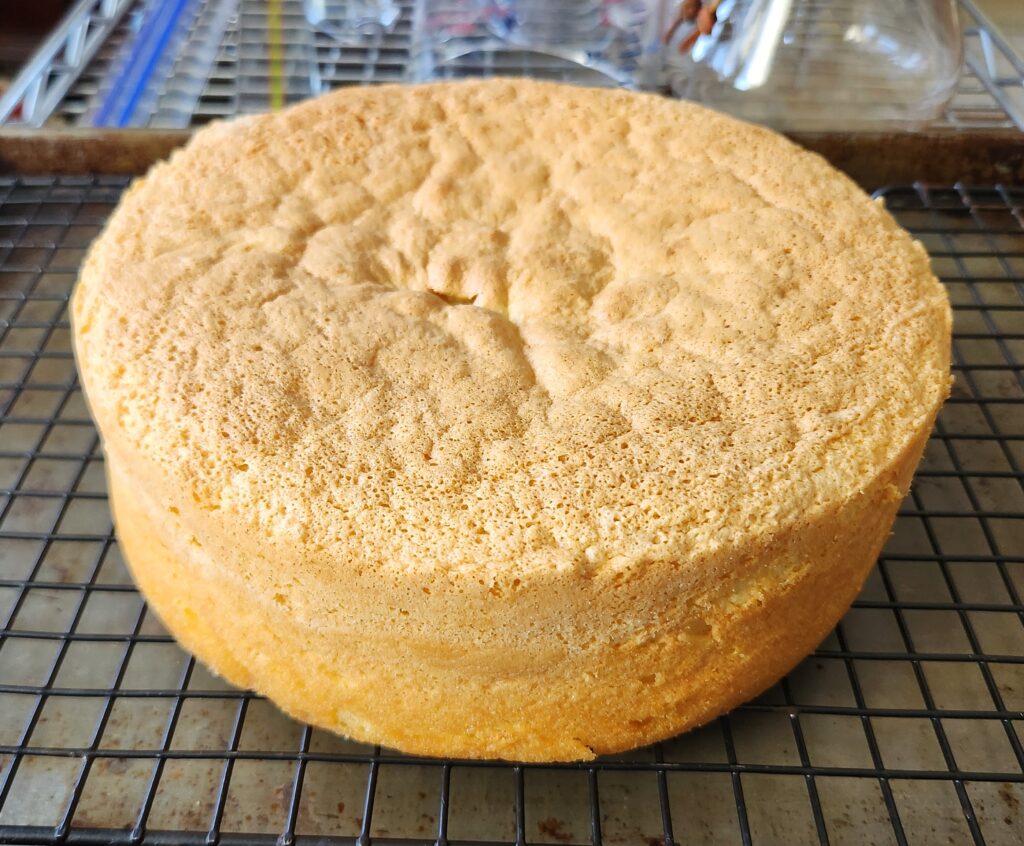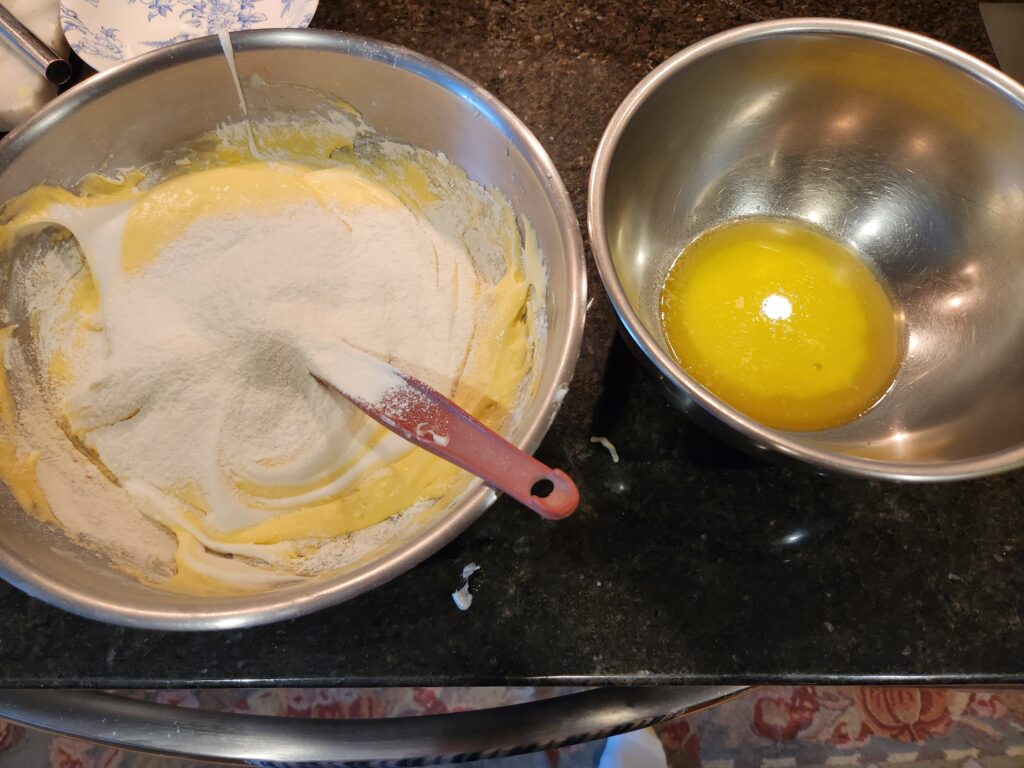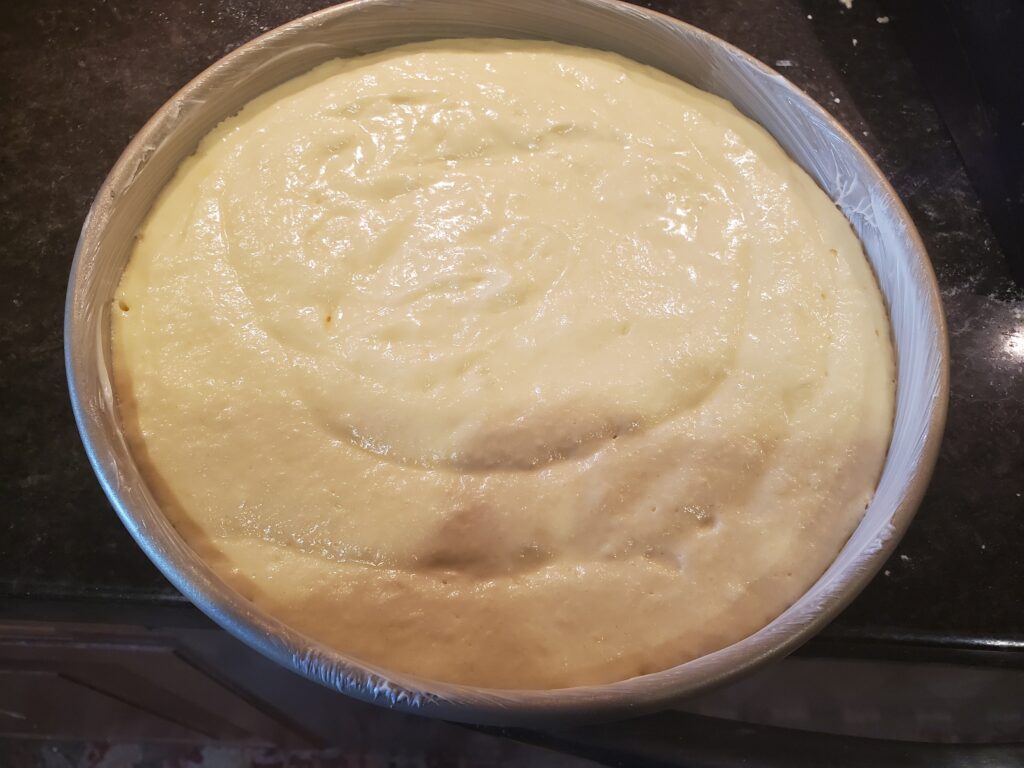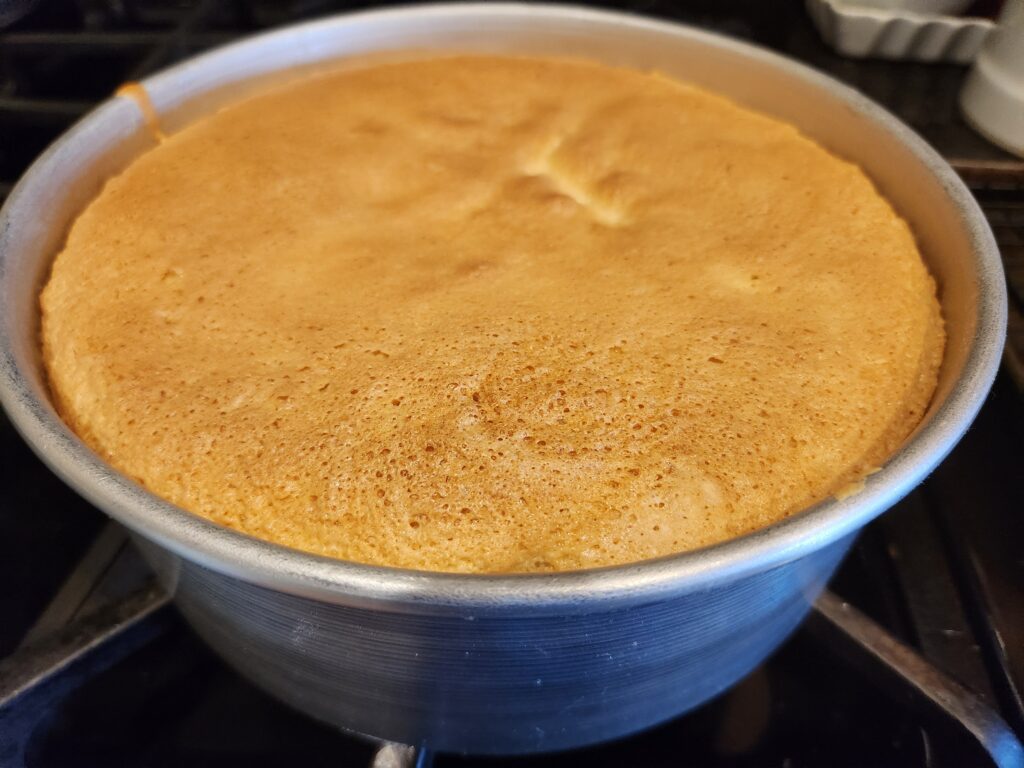Butter Sponge Cake

Basic yellow cake is the foundation of a multitude of layer cakes in both the American and European baking traditions. In America, it is the creaming method yellow cake, rich with butter, eggs and milk and baking powder as the leavening agent.
In France, it is the Genoise, where whole eggs, sugar, and vanilla extract are heated over a water bath until warm, and then beaten until very light and fluffy. Lastly, melted butter and flour are then folded in. The leaving is provided by the air beaten into the eggs. This is the type of cake used exclusively at my first pastry shop job at Patisserie Conversation. As Genoise to bake up dry, a liberal amount of flavored syrup is used when constructing cakes resulting in a slightly wet mouthfeel.
When researching and documenting recipes for Seven Layers, my Martha’s Vineyard pastry shop. I wanted a much better all-purpose European-style yellow cake. After a week of testing with multiple techniques and ingredients I ended up with this wonderful Butter Sponge Cake. It is tender, moist, and adapts well to a wide array of flavorings and fillings.
The technique is a variation on a separated egg sponge, where the air beaten into the egg whites provide the leavening. The egg whites and sugar are beaten to a just firm meringue then folded together with egg yolks, vanilla extract, and the dry ingredients. The melted butter is mixed together with a small amount of the batter, the folded into the remaining batter. This allows the butter to be thoroughly combined with a minimum of folding.
This Butter Sponge Cake is an extremely versatile cake that freezes well and is the delicious foundation of a variety of cakes and tortes.
Butter Sponge Cake
| Yield: One 8-inch cake | # of Servings: 12 | Difficulty: Moderate |
Ingredients:
8 tbl (4 oz / 113 g) butter, room temperature1
¾ cup +2 tsp (3.6 oz / 102 g) pastry flour, sifted
1 tbl + 2 tsp (.5 oz / 14 g) potato starch or cornstarch
6 large egg yolks
1 ½ tsp vanilla extract
6 egg whites
¼ tsp salt
1 cup (7 oz / 198 g) granulated sugar
Special tools and equipment needed:
- 8″ by 2 ½” or 8″ by 3″ cake pan
- 8″ parchment paper circle
- Stand mixer with whip attachment, or handheld mixer
- Instant read thermometer
- Small saucepan for a double boiler
Pre-recipe preparations:
- Butter the cake pan, place parchment circle in bottom and butter and flour the entire pan. Set in the refrigerator to set the butter
- Preheat oven to 350 °F
- Place an inch or two of water in saucepan for double boiler and place on low flame
Directions
- Place butter in a small to medium2 mixing bowl and melt over double boiler. Remove once melted and keep in warm place
- Sift together the dry ingredients. Set aside.
- Place the egg yolks in a large mixing bowl3. Whisk with the vanilla extract, just enough to combine and break up the yolks.
- Beat the egg whites with a pinch of salt on medium speed until soft peaks. Slowly add the sugar and beat just to a stiff meringue.
- Mix one-fourth of the egg whites into the yolks.
- Add the remaining egg whites, and do one quick fold into the yolk mixture. Add the sifted dry ingredients and continue gently folding until very few streaks of egg white remain.
- Take a large scoop of the batter and add to the bowl with the melted butter. Mix to combine, and add back to the large bowl of batter4. Fold together just to homogenous batter. Do not over fold.
- Pour into cake pan (should be no more than ¾ full) and bake until the top feels firm and a cake tester is clean, about 38 to 42 minutes.
- Remove cake pan from oven and place on a cooling rack for 5 minutes. Place a cooling rack over the pan, invert and pull off the parchment circle. Place another rack over the bottom and gently flip again so the cake cools right-side up.
- Allow to thoroughly cool before using or wrapping.
- Cake may be frozen, well-wrapped in plastic film for three weeks. When ready to use, it is easiest to slice into even layers before totally defrosting.
Notes:
- It is easier to melt room temperature butter
- The melted butter will be mixed with some of the sponge batter so the bowl can’t be too small.
- This is the bowl where the final mixing will take place, so room is needed for the beaten egg whites.
- Mixing the butter with some of the sponge batter helps evenly distribute the butter with the rest of the batter with a minimum of folding. If melted butter was simply poured into the batter, it would sink to the bottom requiring substantial folding to bring it up and into the batter.


